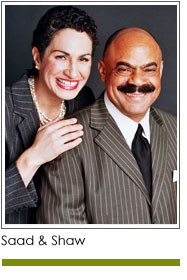 Sometimes it is necessary for you as a nonprofit leader to personally check how easy or difficult it is to communicate with your organization. When you verify these for yourself you can best assess your nonprofit’s responsiveness.
Sometimes it is necessary for you as a nonprofit leader to personally check how easy or difficult it is to communicate with your organization. When you verify these for yourself you can best assess your nonprofit’s responsiveness.
Check the following to ensure you won’t have to make excuses in the future.
Call your office during the day. How long does the phone ring before someone answers? If no-one answers, does it go to voicemail quickly? Is there a personal message on your outgoing voicemail, or just your name or number? Is the message welcoming? If it includes “press zero for the operator” what happens when you press zero? Can you leave a message? Does anyone give you the message? How long does it take for you to receive the message? Call your office after hours. The questions are the same as above.
Call the main number (during the day and after hours). Does a “live” person answer the phone? How simple or complex is it to reach a person? What happens if you don’t know the person’s name? Is there a main mailbox for “general questions?” If yes, how long does it take for a message to be directed from the main mailbox to you, or the person you left the message for?
Subscribe to your newsletter. What happens? Is there a welcome message? Does your organization actually send out a newsletter?
Visit your website. How does it look? Can you view it on your phone? Is the information current? Do the links work? Are the lists of donors, board members and advisory committee members current? Is there a number to call? What happens when you call the number? Can you send an email from the site? If yes, send one and investigate what happens. Where does the message go? Who receives it? When do they respond? Is an automated response sent acknowledging receipt of the message?
The following are a few other things that can go unnoticed and become a problem:
1. How long does it take to get a thank you after making a donation?
2. How far in advance of a meeting are the board materials sent out?
3. Can the development department respond to data requests from fundraising leadership?
4. Do all major donors receive a personal thank you from the CEO?
5. Are you updated regularly on fundraising progress?
6. Is information requested by donors or prospective donors provided in a reasonable amount of time?
Personally paying attention to the details can help build good communication.
Copyright 2016– Mel and Pearl Shaw
For help growing your fundraising visit www.saadandshaw.com or call (901) 522-8727.











